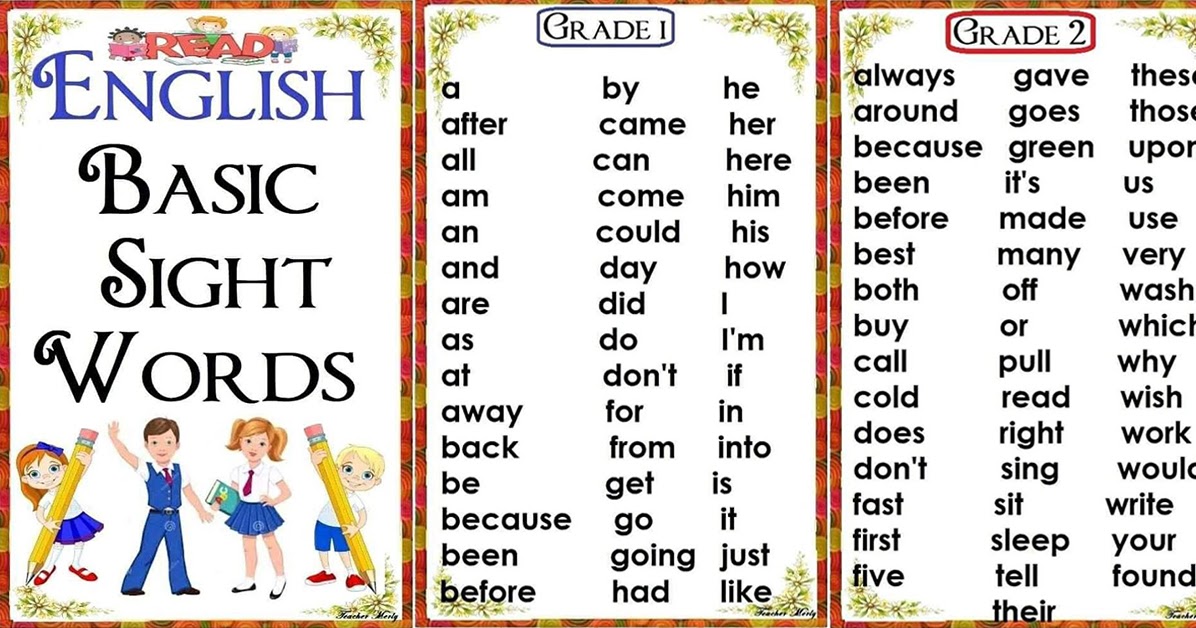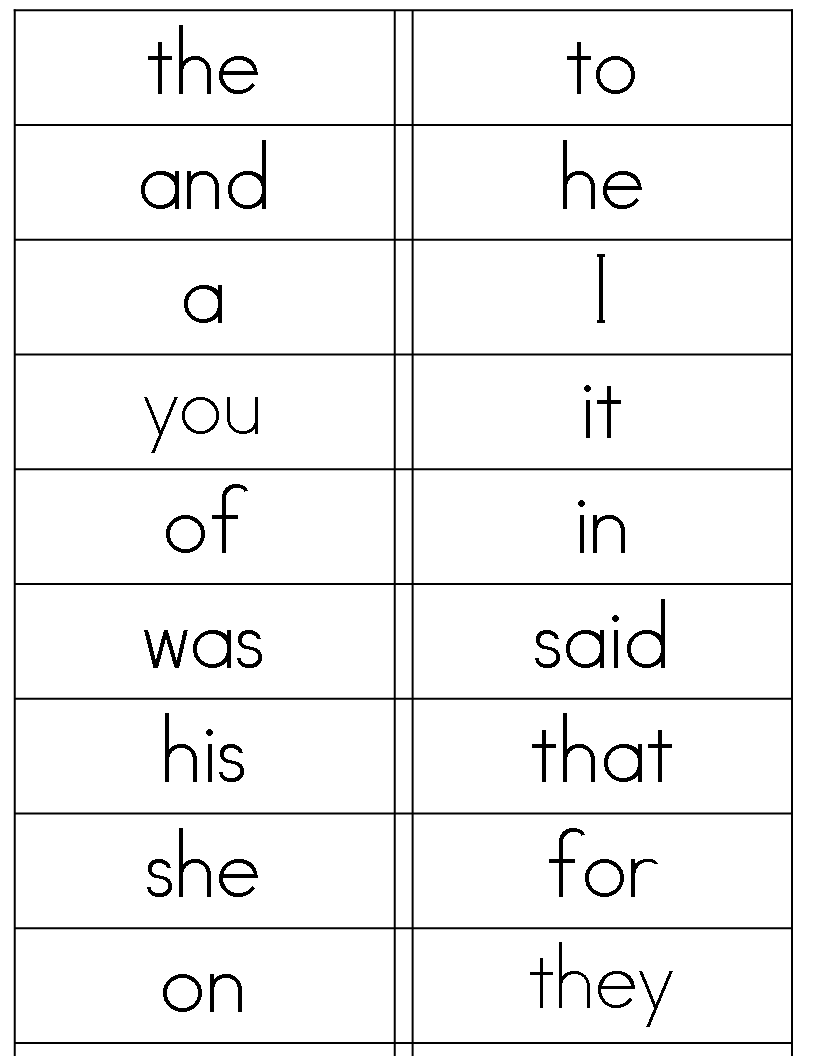

If they can read a book on their own and recognize the words, there is a high probability that they will not feel discouraged and would rather feel more motivated to read more. Since the first hundred sight words comprise over 50% of English text, a child that has a fair idea of sight words can recognize sentences and frame them easily and more confidently. Given below are some of the uses of sight words: Improves Confidence in Students

It is just that they are unaware of the significance they pose in the process of speech and writing. Given below is a list of the most common sight words in the English Language:įrom the above list, it is clear that sight words are being used by everyone in every conversation. Even though they may seem like a complex thing to wrap one’s head around, the idea behind the concept of sight words is to make memorization and usage of the word instant and automatic. It is mostly associated with the realm of reading, and it is with this connotation that it is generally used. Overall, you want your child to have fun, be engaged, and be encouraged to read more! Practicing these words through games is highly recommended.Sight words are high-frequency words that are taught to young students so that they are instantly identified, recognized, and used in the right way. Offer praise when they grasp a new word and positive constructive feedback to correct mistakes.For instance, separately teach them words like “will” and “well” or “is” and “if.” Try to avoid introducing two similar sight words in the same lesson.Introduce your child to a new sight word by itself, then highlight the word repeatedly throughout a book.


Promote fluent reading and writing – Knowing sight words helps to make reading and writing skills more efficient.Boost confidence – Having the ability to read the majority of words on a page helps them feel more like independent readers and builds their confidence.Increase comprehension – They can focus on words they haven’t learned yet, rather than decode every word in the text.Sight words make up about 75% of the words used in books for beginners! When children can immediately recognize these words, it can: Identifying sight words can give kids an extra advantage when learning to read. While many teachers refer to these as sight words, they’re also called high-frequency words, core words, or popcorn words – because they “pop up” so many times in text! Why are Sight Words Important? Examples of sight words are: is, it, have, had, he, she, they, was, what, with, be, and but.Īs you can imagine, it’s a bit difficult to define “what” or use an illustration to explain the word “is.” But with repetition and lots of practice, kids can memorize these words, which helps them piece together a story without much assistance. Sight words are words that are used frequently in writing and speech, some are difficult to define, and they don’t necessarily follow traditional phonetic protocols. Parents can help their children learn sight words through fun games and activities.Īround ages 4 and 5, children learn specific words by sight rather than sounding them out.These words are important for children to learn because they help them comprehend a story, boost reading confidence, and promote fluency.Examples of sight words are: is, it, have, had, he, she, they, was, what, with, be, and but. Sight words are words that are used frequently in writing and speech, some are difficult to define, and they don’t necessarily follow traditional phonetic protocols.Educators have uncovered the fascinating ways the brain learns the written word, and sight words are a fundamental part of that process.Over the years, educators have uncovered the fascinating ways the brain absorbs the written word, and sight words are a fundamental part of that process. They may struggle along the way, but encouraging a love for reading benefits children tremendously. Helping your child become an independent reader is an exciting (and sometimes frustrating) journey.


 0 kommentar(er)
0 kommentar(er)
